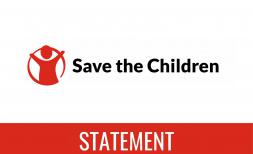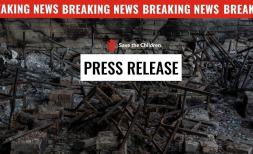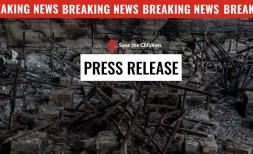Five years of Za’atari – last hope of schooling for Syrian teens

Five years ago today, Za’atari camp opened in the north of Jordan to deal with the sudden influx of refugees fleeing conflict and brutality inside Syria.
For tens of thousands of children, the move marked more than just the loss of their homeland, but the loss of education and opportunity, mirrored by a slide into child labour or early marriage as communities struggled to cope. Teenagers, pressured to relieve financial family burdens, and unable to catch up the years of schooling they have missed, remain the worst affected despite recent attempts to open up access to public schools.
Since the start of the war, up to 1.3m Syrians are believed to have crossed the border into Jordan, placing a massive strain on the education system. Last year, the Jordanian government vowed to turn the situation around. At an international donor conference in London it pledged to get all out-of-school children into classrooms by September 2017 and created 75,000 places – an additional 50,000 in public schools, plus 25,000 in non-formal education providing accredited ‘catch up classes’ as a bridge to formal education.
Previous restrictions preventing children that had missed more than three years of school from returning were removed, while Syrian families were given the right to work in limited industries, in an attempt to ease families’ reliance on child labour.

Despite this, many children, especially teenagers, continue to miss out. In the school year 2016/17 an additional 24,542 Syrian children were enrolled in formal education, less than half of the 50,000 newly allocated public school places. Those who have gone back school, say they are struggling to catch up, with lessons crammed into three teaching hours per day, and classes of mixed ages and abilities.
With lives fragmented by the war, and an increase in single parent headed households, families often face financial insecurity. Syrian girls remain at an increased risk of early marriage with many families keeping adolescent daughters at home, due to a fear of harassment on the way to school, worsened by dark nights in winter months.
Boys meanwhile, have taken on the responsibility of supporting their families. Almost 50 per cent of Syrian households across Jordan rely in some way on income generated by a child.
Ali*, 14, is the eldest boy of five siblings living with his mother in Za’atari. Since his father left, Ali* and his mother have worked to support the family. He goes to work at four am every day, picking fruit in nearby fields and finds it hard to stay in school.
“I have to work. I am the only one,” Ali* said. “If there were somebody else, I would have stayed at school. When I go to school, I don’t understand a thing. If I ask my friend to help me the teacher would hit us. That’s why I have decided to stop going to school. The kids that are able to understand school, they should stay at school. Those who don’t understand they have no future.”

He is by no means alone. Almost half of all registered school-aged Syrian children in Jordan were not in formal education as of December 2016.
Once a smattering of tents on the horizon, 13 kilometres from the border with Syria, with just one school, Za’atari camp has grown exponentially. The first dwellings were built in just nine days in July 2012. By the following April, UNHCR estimated more than 200,000 people were living there. The number has since fallen significantly and now holds steady at around 80,000 – making Zaatari the largest Syrian refugee camp in the world. Since it opened, huge strides have been made to improve schooling, with 29 formal education places available in morning or afternoon shifts in 14 schools. Still, the gaps in education created by the war are harder to bridge.
Rania Malki, CEO of Save the Children Jordan said: “Za’atari represents much more than the war. It represents the start of the Syrian refugee crisis in the Middle East, for which Jordan has bore the brunt of the burden - not just in Za’atari but in informal camps and in communities across the country which were already vulnerable before the war. The impact on the availability of quality education has been felt by Syrian and Jordanian families alike. The Jordanian government have made huge commitments to give all school children the chance of an education, but this is just half the battle. Children have missed a significant part of their formative education and need additional support if they are going to catch up.”

There are other less visible barriers too, with many children experiencing prejudice or bullying. Ahmed*, now 16, came from Syria four years ago and lived with his family in a host community outside of Amman. He attended public school for a while, but later dropped out.
“I was in year six, but unable to read and write. My classmates who were younger than me used to complain and say why should we put up with you, you are disturbing us. When I told the teacher that I am not able to write or read, he said it was not his problem and I had to be punished for not doing my homework. This made me hate school.”
Although much has been done to increase the numbers of Jordanian and Syrian children attending schools across the country, figures show that there is still work to be done to improve the quality of education. In 2014/15, it was reported that more than half of students sitting the official Jordanian ‘tawjihi’ examinations failed. In over 338 public schools, no students at all passed.
Save the Children provides learning support for 200,000 children across the country, aimed at helping children prepare for and access formal education. For those who are unable to enrol in public schools, we provide access to quality education programmes that include basic and advanced literacy and numeracy sessions aimed at helping children catch up on the learning they have missed. Drop in centres aim to identify children involved in child labour, and work with families to support their return to school. With many children having experienced the horrors and grief of war, psychological support is also available to enable to help them to thrive inside and outside of the classroom.

This summer, Save the Children will also take up the ‘Back to School’ campaign, run in coordination with UNICEF, aiming to identify out-of-school children, including those who have been out of school for several years, and get them back to the classroom.
Rania Malki, CEO of Save the Children Jordan said: “The Jordanian government has kept its promise to create school places for children but it is not enough just to have a space at a desk. Teachers need to have adequate training while external obstacles like child labour, early marriage and fear of harassment need to be addressed in coordination. The International community must keep its promise to support countries like Jordan, so that children can not only stay in school, but also have a real chance to learn whilst they are there. These are children who will rebuild Syria when the war is over – we need to invest in them and their right to education.”
Save the Children is calling for the international community to renew the commitments made at the London and Brussels conferences and support countries in the region with finance and resources to get children back to school. This includes providing professional and financial support and investment in:
- Training teachers and counsellors in host countries so that children receive the standard of education they deserve;
- Better systems to ensure children feel safe in schools, such as tackling bullying, promoting community cohesion, and law enforcement against corporal punishment;
- Plans to phase out the double shift model, with a clear pathway on getting back to full time formal schooling;
- Greater emphasis on non-formal education as a pathway to formal education, so that children return to formal education ready to learn.
- Measuring learning outcomes, as a tool to monitor and improve the quality of education.
ENDS-----
Notes to editors:
- In December 2016, 125,000 of the 232,868 (54%) registered school aged Syrian children in Jordan were in formal education http://wos-education.org/uploads/reports/170331_Brussels_paper.pdf
- In 47% of Syrian households in Jordan that reported paid employment, a child is contributing to the household’s income. http://www.unwomen.org/-/media/headquarters/attachments/sections/library/publications/2013/7/report-web%20pdf.pdf?vs=1458
- Save the Children runs 16 Child Protection programmes in Za’atari camp and 13 educational and child protection centres across Jordan. These are operated through dedicated children’s centres and through mobile children’s centres which target children in rural and hard to reach communities, offering psychological support and educational classes in maths, English and Arabic.
- In 2016, more than 75,000 boys and girls benefited from psychosocial support resiliency, child protection and life skills activities across our centres in the camps and host communities in Jordan.
- In Za’atari, on average 6,700 children have safe access to our centres each week. Our programmes have reached approximately 1.2 million people since the start of the Syria crisis.




